Atmosphere to Electrons (A2e) is a multi-year U.S. Department of Energy (DOE) research initiative targeting significant reductions in the cost of wind energy through an improved understanding of the complex physics governing electricity generation by wind plants. The goal of A2e is to ensure future wind plants are sited, built, and operated in a way that produces the most cost-effective, usable electric power.
To achieve this goal, A2e has formed a collaborative of scientists from DOE national laboratories, industry, and academia to glean an unprecedented understanding of the wind plant operating environment through systems-level research initiatives and advanced high-fidelity modeling operating on high-performance computer platforms. The advances in scientific understanding of plant operation and performance will facilitate innovative turbine architectures and advance plant control strategies to provide wind energy at the lowest possible cost for the nation.
A2e Objectives
- Transform today’s wind plant operating environment through advanced physics-based modeling, analysis, and simulation capabilities
- Revolutionize advanced systems-level control capabilities that adopt flow monitoring and active wake control to mitigate energy and performance losses
- Develop new strategies and technology to limit wind farm losses by up to 20%, reduce annual operational costs by more than $100 million per year, and align project financing terms with conventional generation projects.
Modern plant installations can experience large differences between modeled pre-construction estimates and actual post-construction energy production. Uncertainties in the analysis tools providing these estimates represent higher risk factors for lenders.
To optimize performance and lower the overall cost of wind energy, A2e systematically assesses wind plant performance as well as the analysis methods used to estimate power production and financial return rates for developers and owner-operators.
This plant performance and financial risk assessment research area focuses on activities to characterize and reduce the risk and uncertainty associated with developing, investing in, owning, and operating wind plants. Investigators assess the impact that project uncertainties have on:
- Financial structures
- Cost of capital
- Cost of ownership
- Perception of financial risk
- Levelized cost of energy.
The American WAKE experimeNt (AWAKEN) is an international, multi-institutional wind energy field campaign designed to answer the most pressing science questions about how individual wind turbines interact with one another and the atmosphere in a land-based wind farm. Funded by the U.S. Department of Energy (DOE) Wind Energy Technologies Office, AWAKEN is part of a larger DOE effort to understand and improve the efficiency of wind plants. The project leverages the expertise and resources of a variety of partners—from DOE national laboratories to international academia, research institutions, and industry. Research partners use traditional, remote and airborne sensors to gather data about the atmosphere and wind around and within operational wind farms.
The American WAKE experimeNt (AWAKEN) is an international, multi-institutional wind energy field campaign designed to answer the most pressing scientific questions about the impacts of wind turbine wake effects and how individual wind turbines interact with one another in a wind farm. AWAKEN will gather observational data from wind farms to validate wind power plant models and advance the industry’s understanding of how a wind farm operates.National Renewable Energy Laboratory - NRELTo correctly model the behavior of a wind plant, accurate information regarding the atmosphere is needed. The A2e initiative is examining how the wind interacts with wind farms at all relevant physical flow scales impacting performance, from regional weather patterns down to the coherent flow structure affecting individual turbines. This research will enable the development of better forecasting models, wind plant simulations, and wind-plant control strategies for optimized performance and operation.
The Wind Forecast Improvement Project (WFIP) is a public/private partnership consortium that includes DOE, the National Oceanic and Atmospheric Administration (NOAA), and industry. The project’s goals are to increase the accuracy of short-term wind energy forecasts for better grid operations and demonstrate the economic value of these improvements. Current work is focused on improving wind forecasts in areas with complex terrain by improving numerical algorithms within the existing suite of numerical weather prediction models.
Wind resource monitoring activities under WFIP include a field-test campaign conducted by DOE national laboratories, NOAA, universities, and industry to assess the accuracy, resolution, and robustness of instruments used to measure wind resources in the atmospheric boundary layer where wind turbines operate.
Technologies evaluated include devices that use precision radar, sound waves, and lasers. Information collected from this research will be stored in a publicly accessible database for use by the global wind research and development community.
DOE-sponsored research is advancing the state of the art in high-fidelity computer simulations needed by manufacturers, developers, and owner-operators for optimizing wind plant performance. The project goals are to enable the coupling of mesoscale scale and microscale models, allowing for wind inflow simulations at the wind-plant level to be inclusive of larger-scale weather phenomena. This requires a basic understanding of how inflowing wind changes as it passes through the wind plant and the extent to which the flow field can be actively modified.
Modeling the wind flow through a wind farm is affected by wind turbine interactions, continuously changing weather conditions, and complex terrain. A2e will develop unprecedented high-fidelity modeling on high-performance computer platforms that can simulate the wind flow through a wind plant and resolve the wind plant flow dynamics.
To ensure their value, high-fidelity modeling simulations must be systematically validated. Under A2e, research scientists from DOE national laboratories, industry, and academia are collaborating with the international community to validate models using existing wind plant performance data. Data collected from future wind tunnel and field experiments will also be conducted as part of the validation program.
Additionally, field experiments at the Scaled Wind Farm Technology facility are investigating the fundamental physics impacting wake dynamics, which can account for up to 9% of wind plant energy loss.
High-fidelity modeling, systematic model validation, and a better understanding of the underlying physical phenomenology driving wake dynamics will help optimize future wind plant performance.
Achieving optimized wind plant performance requires an unprecedented understanding of the plant operating environment. Under the A2e initiative, scientists from DOE national laboratories, industry, and academia are developing integrated research programs to evolve advanced modeling and simulation capabilities. Their goal is to provide a validated digital environment for evaluation of innovative technologies that maximize energy extraction at the lowest cost of energy.
A key focus of this research area is advanced plant-level digital controls, which can actively monitor the flow field, anticipate wind changes, and modify the flow through redirection. This increases performance and mitigates unwanted dynamics and interactions that can result in catastrophic damage and system failure. Work in this area also includes analyzing and optimizing the wind plant from a systems level rather than an individual turbine level.
For more information about A2e, read about A2e projects and data or email us.
Atmosphere to Electrons News
-
 DOE invests $20M to help address technological and supply chain challenges limiting recycling of fiber-reinforced composites and rare earth element magnets in wind turbines and improve wind energy technologies.
DOE invests $20M to help address technological and supply chain challenges limiting recycling of fiber-reinforced composites and rare earth element magnets in wind turbines and improve wind energy technologies. -
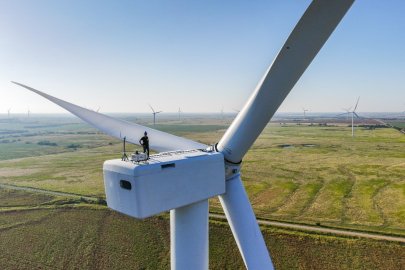 The American WAKE experimeNt (AWAKEN) is compiling the world’s largest and most comprehensive dataset on wind energy atmospheric phenomena, detailing how wind and surrounding air particles interact with wind turbines and wind farms.
The American WAKE experimeNt (AWAKEN) is compiling the world’s largest and most comprehensive dataset on wind energy atmospheric phenomena, detailing how wind and surrounding air particles interact with wind turbines and wind farms. -
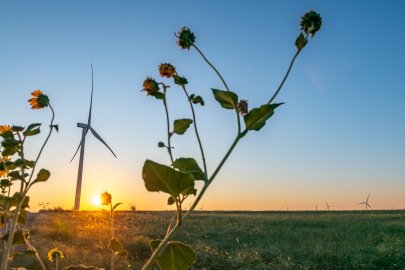 The Wind Resource Database is an online tool that captures information about atmospheric forces that affect how wind turbines perform and how much energy they capture.
The Wind Resource Database is an online tool that captures information about atmospheric forces that affect how wind turbines perform and how much energy they capture. -
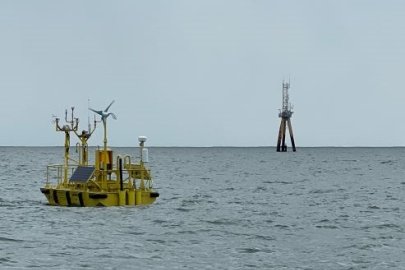 DOE and the National Oceanic and Atmospheric Administration launched an 18-month initiative to gather extensive weather, ocean, and wildlife data near the sites of active offshore wind farms and lease areas off the coast of the northeast U.S.
DOE and the National Oceanic and Atmospheric Administration launched an 18-month initiative to gather extensive weather, ocean, and wildlife data near the sites of active offshore wind farms and lease areas off the coast of the northeast U.S. -
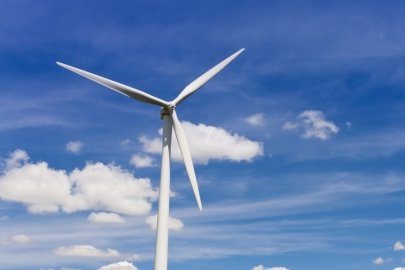 WETO's decades-long support of modeling software helps expand wind energy industry's turbine design capabilities
WETO's decades-long support of modeling software helps expand wind energy industry's turbine design capabilities -
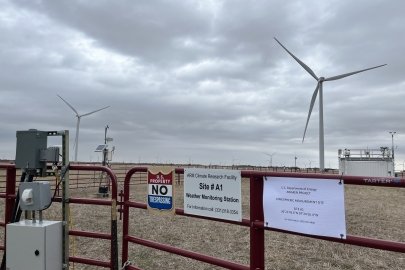 The American WAKE experimeNt, an international, multi-institutional effort to gather the most comprehensive data-set to date on how individual wind turbines interact with one another and the atmosphere on a wind farm, is well underway.
The American WAKE experimeNt, an international, multi-institutional effort to gather the most comprehensive data-set to date on how individual wind turbines interact with one another and the atmosphere on a wind farm, is well underway. -
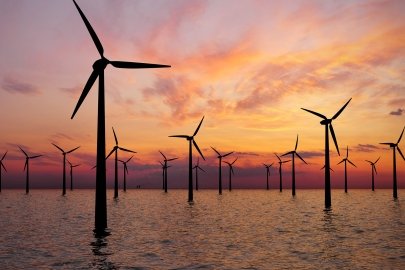 In a collaborative study published in Wind Energy Science, a team led by Pacific Northwest National Laboratory examined offshore wind energy challenges and laid out future approaches to meet them.
In a collaborative study published in Wind Energy Science, a team led by Pacific Northwest National Laboratory examined offshore wind energy challenges and laid out future approaches to meet them. -
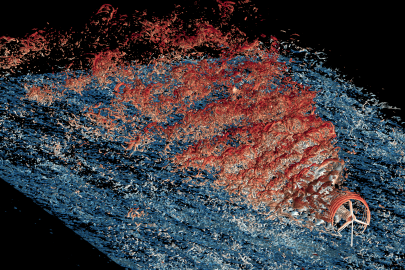 The American WAKE experimeNt—a massive data collection effort funded by WETO—could help U.S. wind farms produce more energy, increase profits, and, eventually, reduce electricity prices for consumers.
The American WAKE experimeNt—a massive data collection effort funded by WETO—could help U.S. wind farms produce more energy, increase profits, and, eventually, reduce electricity prices for consumers. -
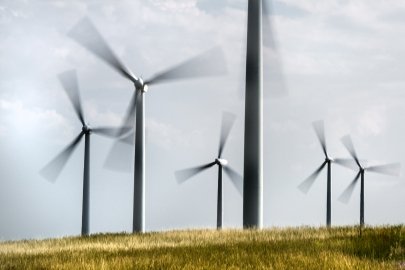 The Numerical Manufacturing and Design tool and FLOw Redirection and Induction in Steady State version 3.0 have received important upgrades.
The Numerical Manufacturing and Design tool and FLOw Redirection and Induction in Steady State version 3.0 have received important upgrades. -
 The National Rotor Testbed is an open platform for testing new wind turbine technologies and collaborating among national laboratories to validate advanced computational models for wind turbines. The platform now includes wake control research.
The National Rotor Testbed is an open platform for testing new wind turbine technologies and collaborating among national laboratories to validate advanced computational models for wind turbines. The platform now includes wake control research.
Atmosphere to Electrons Publications
-
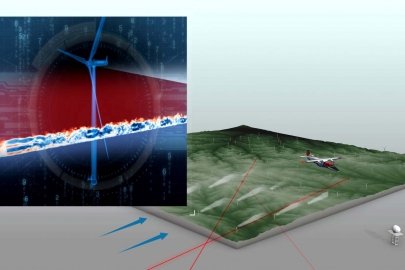 AWAKEN is part of a larger DOE effort to understand and improve the efficiency of wind plants.
AWAKEN is part of a larger DOE effort to understand and improve the efficiency of wind plants. -
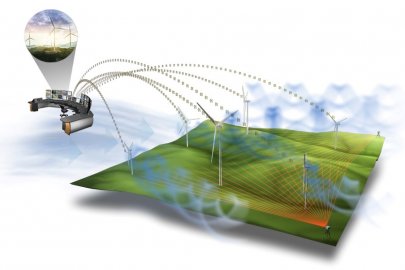 This report explains how new energy science and technological breakthroughs could cut the cost of wind energy in half by 2030.
This report explains how new energy science and technological breakthroughs could cut the cost of wind energy in half by 2030. -
The A2e initiative pursues an integrated research portfolio to coordinate and optimize advancements in four main research areas: plant performance and financial risk assessment, atmospheric science, wind plant aerodynamics, and next-generation wind pla...

